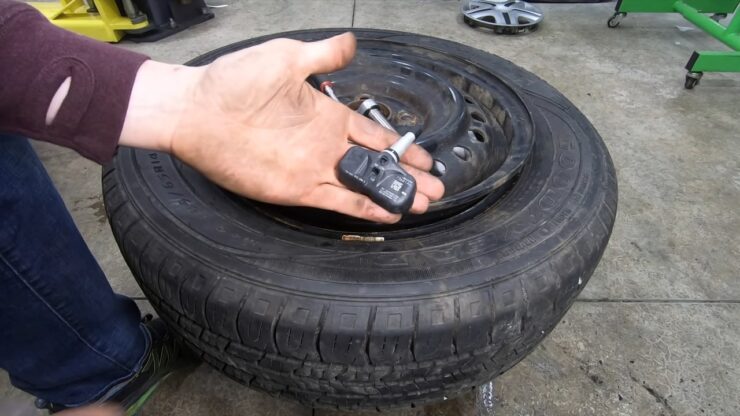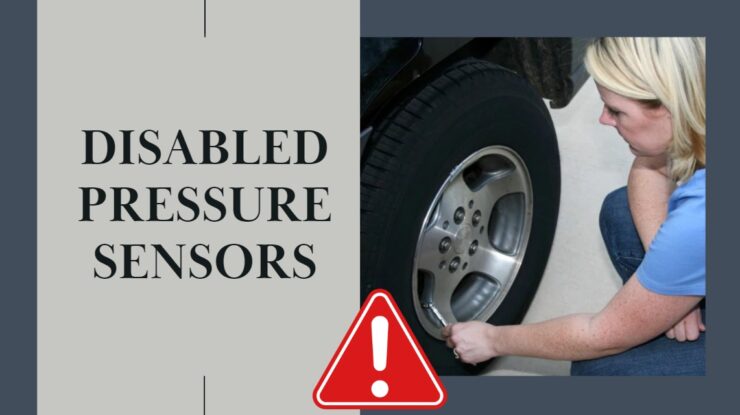Tires are one of the most important parts of a car, and they need to be maintained properly in order for the car to operate smoothly. But what if you don’t have access to your car’s tire pressure sensors?
This is a question that many drivers have been asking lately, as reports have surfaced of thieves disabling tire pressure sensors in order to steal cars. If you’re worried about this happening to your car, there are a few things you can do to protect yourself.
In this article, we will teach you how to disable tire pressure sensors if you need to, and we will also provide some tips on how to keep your car safe.
What is a Tire Pressure Sensor?

A tire pressure sensor is a small device that monitors the air pressure in a tire. When the air pressure in the tire falls below a certain level, the sensor will activate and tell your car’s computer how much air to let into the tire. This system is important because it helps you know when you need to add air to your tires.
Many people think that a tire pressure sensor can’t be disabled, but this isn’t always true. If your car has an electronic stability program (ESP), then your ESP can disable the tire pressure sensor. ESP is a feature that some cars have that helps keep your car from skidding on wet roads. If your car doesn’t have an ESP, then you can disable the Tire Pressure Sensor by following these steps:
- Locate and remove the screw located near the driver’s side wheel well on most vehicles. This screw is usually red or black and uses a Torx head tool.
- Once removed, pull up on the tab holding down the sensor cover and remove it with care as it may be weighted down with electrical cables connected to it.
- Locate and unscrew four screws located behind the cover of the sensor (two per side). Do not touch or damage any of the wiring connections inside! Once unscrewed, lift off both covers of each sensor (one at a time).
- Carefully route all wiring out of sight behind each cover before replacing them. Make sure to reconnect all of the wires before screwing the covers back on.
How do Tire Pressure Sensors Work?
There are a few ways tire pressure sensors work. One is that when the air pressure in the tire goes down, the sensor sends a signal to the control module. This signal tells the control module how much air needs to be added to the tire in order for it to reach its target pressure. The control module then adds this amount of air (or decreases the amount of air) and sends a signal back to the sensor.
Some cars have a setting that allows drivers to disable Tire Pressure Sensors altogether. This setting is usually found under “Auto” or “Tire & Wheels” in the car’s settings. If you disable your TPMS, you’ll need to reset them every time you fill up your tires with air because without a sensor, there is no way for the control module to determine how much air needs to be added.
Can Tire Pressure Sensors be Disabled?
Tire pressure sensors can be disabled in a few different ways. The most common one is to remove the sensor from the tire and then reattach it in a different location. This can be done by using a knife or a tire iron. Another way to do it is to puncture it. This can be done with a sharp object, such as a knife, or by using air pressure to blow it off of the wheel.
How Long Do the Sensors Last?

As with most things, the life of a tire air pressure sensor varies depending on how it’s used and maintained. Generally speaking, sensors will last anywhere from 6,000 to 12,000 miles. It’s important to note that if the sensor is damaged, its lifespan may be shortened significantly.
Do They Reset Themselves?
The National Highway Traffic Safety Administration (NHTSA) has concluded that tire pressure sensors do not reset themselves and must be reset by a qualified technician. Tire pressure sensors are designed to detect changes in air pressure and alert the driver. If the sensor does not detect a change in air pressure, then the system will assume that the tire is inflated to the manufacturer’s specifications and will not activate warning lights or sounds.
Over time, the sensor may become “fuzzy” in its readings, and may not be able to detect a decrease in air pressure when it actually occurs. This could lead to improper operation of warning systems and eventual safety issues.
If your car has an automatic transmission, you should also check your vehicle’s OBDII diagnostic port for any codes related to faulty TPMS sensors. The NHTSA recommends having your car serviced if you experience problems with your TPMS system.
Can Tire Pressure Sensor Give False Reading?

In general, a tire pressure sensor will give an accurate reading of the pressure in the tire. However, there are some cases where the sensor may give a false reading. This can happen if the sensor is dirty or if it is not properly installed. In addition, the sensor may give a false reading if the air pressure in the tire is lower than what is actually present.
Does Weather Affect Tire Pressure Sensor?
Whether the weather affects a tire pressure sensor is a question that has long been debated by motorists. There are those who swear that weather conditions do affect the accuracy of sensors, while others maintain that regardless of outside conditions, the sensors always give accurate readings.
NHTSA does not believe that weather conditions can affect tire pressure sensors in a significant way. The agency’s research shows that even when temperatures drop below freezing, the sensors still provide accurate readings. The reason for this is because the air inside a tire remains at a constant temperature no matter what the outside environment is like.
So, while it’s possible that bad weather could cause a sensor to give an inaccurate reading, it’s highly unlikely. If you’re worried about your tire pressure, be sure to check it regularly regardless of outside conditions.

